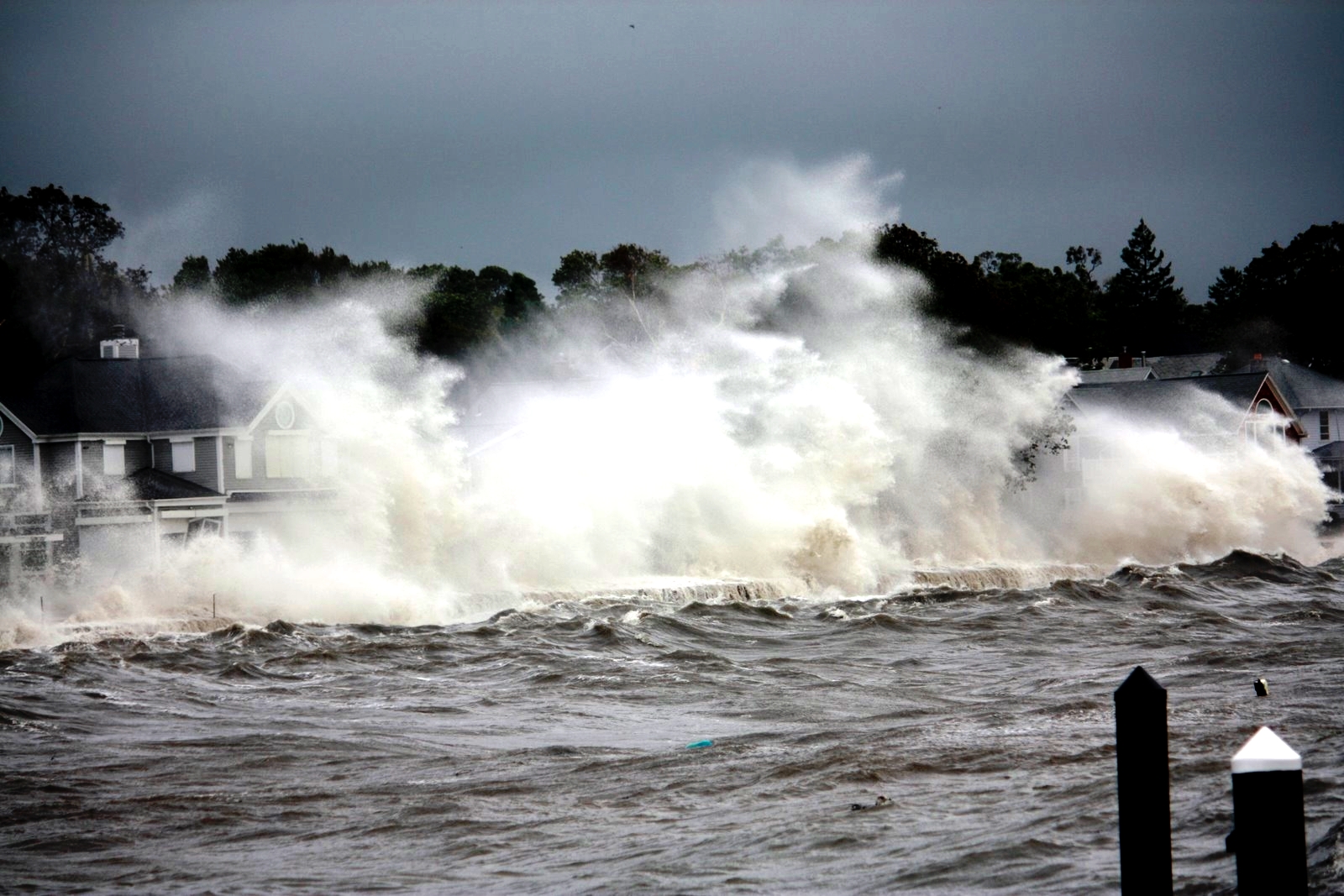On the heels of last week’s Long Island Sound Citizens Summit exploring Superstorm Sandy and climate change, the nonprofit research group Climate Central released a new report yesterday on the amount of sewage that spilled into local waterways during and after Sandy. The report also emphasizes the long-term vulnerability of sewage treatment systems because of sea level rise and the expected increase in big storms.
Among the eight hardest hit states – New York, New Jersey, Washington, D.C., Maryland, Pennsylvania, Connecticut, Virginia, Rhode Island and Delaware – 11 billion gallows of sewage overflowed into our waterways as a result of Sandy. As the report details, to put that into perspective, that amount is equivalent to “New York’s Central Park stacked 41 feet high with sewage or more than 50 times the BP Deepwater Horizon oil spill.”
Locally, the report notes that the storm caused spills as large at 17.1 million gallons from a treatment plant in Bridgeport and as small as 20 gallons from a manhole in New Haven. In the far western end of the Sound, spills were reported from numerous treatment plants and pump stations in Brooklyn, Queens, the Bronx and Nassau County.
[slideshare id=20261562&style=border: 1px solid #CCC; border-width: 1px 1px 0; margin-bottom: 5px;&sc=no]Below are a few highlights from the report for Connecticut and New York:
CONNECTICUT
- 24.3 million gallows of sewage overflowed from Connecticut plants as a result of the storm.
- The two largest spills, 17 million and 2.5 million gallons of partially treated sewage, came from two plants in Bridgeport as a result of increased flows to the plants due to flooding in the surrounding sewers.
- The sewage treatment plant in Mystic also suffered from a storm surge that overwhelmed three of its major treatment processes, resulting in 2.3 million gallons of partially treated sewage being discharged into the Mystic River.
NEW YORK
- 5.2 billion gallons of untreated and partially treated sewage overflowed from New York plants as a result of the storm.
- New York City reported six sewage spills larger than 100 million gallons and 28spills larger than 1 million gallons.
- The largest spill in New York State came from the Bay Park facility on Long Island. The plant was knocked out of service for 44 hours, resulting in 104 million gallons of untreated sewage overflowing into Hewlett Bay. Another 2.2 billion gallons of partially treated sewage flowed through the plant during the 44 days it took to fully restore plant operations.
- In Westchester County, 49 million gallons of untreated sewage flowed from the Yonkers treatment plant during 14 hours at the peak of the storm and another 1.2 billion gallons of partially treated sewage flowed from the plant in the following four weeks.
- The Hunts Point wastewater treatment plant in the Bronx was forced to bypass sewage through its gates to prevent flooding of the plant, resulting in the overflow of 153.8 million gallons of sewage into the East River.
- Due to high tides and storm surge, the Newtown Creek wastewater treatment plant in Brooklyn bypassed 143 million gallons of sewage into Newtown Creek.
- At three other New York City wastewater treatment plants – Tallman Island, Wards Island and Stony Point – another 102.6 million gallons of sewage overflowed from those facilities.
WHERE DO WE GO FROM HERE?
According to the report,
“Sandy revealed how vulnerable critical components of our sewer infrastructure are to storms that cause coastal flooding, carry heavy precipitation, and temporarily cut access to the electricity grid. The costs associated with a storm like this are enormous, and range from the cleanup that happens immediately after a disaster, to the added expense of operating damaged equipment months after a storm.”
In the aftermath of the storm and the overflows, the region is now in the difficult position of figuring out how best to prepare our infrastructure for future storms so that it does not become as severely compromised. Unfortunately, sewage plants pretty much have to be located where they are already, many of which are in low-lying areas near bodies of water. Therefore the best practical solution might be to relocate key equipment out of flood zones within the plants themselves.
Posted by Rebecca Kaplan, director of communications for CFE/Save the sound, and Tom Andersen, NY program and communications coordinator for Save the Sound


1 thought on “New Report Details 11 Billion Gallons of Sewage Overflows During Superstorm Sandy”
Comments are closed.